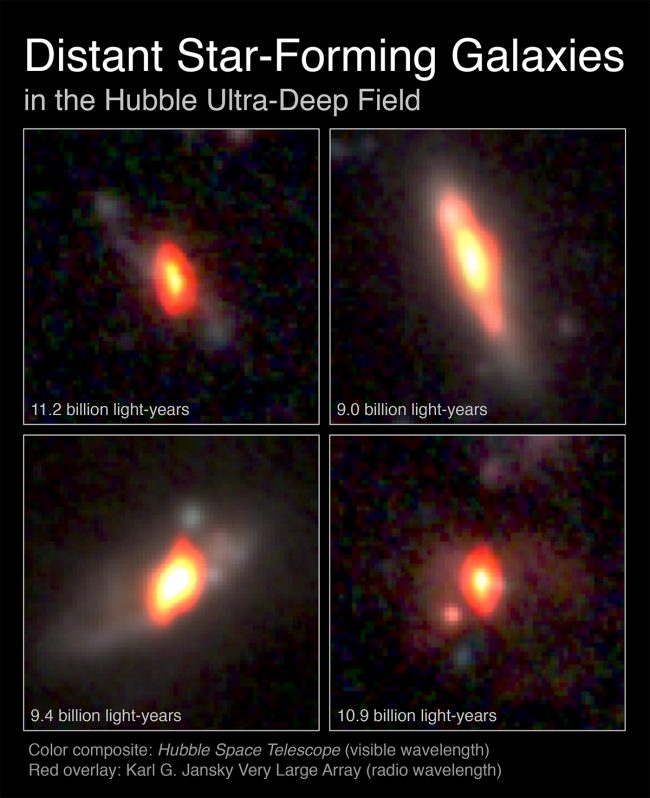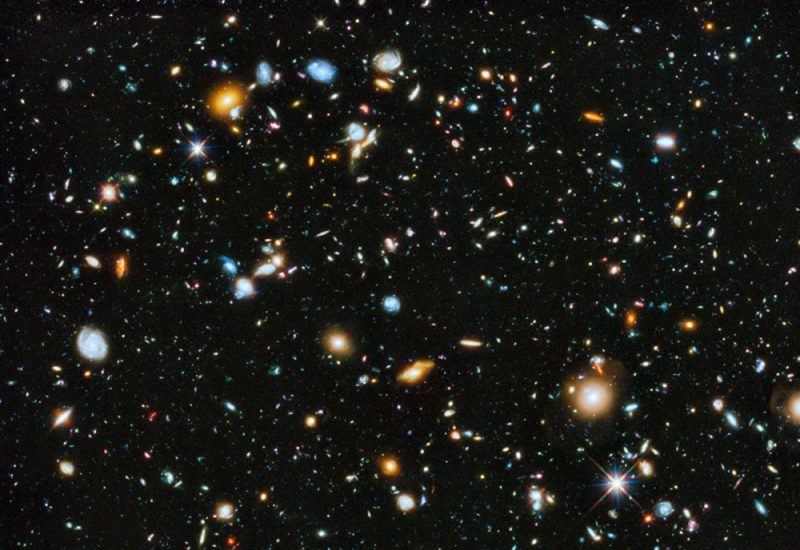
Due to the finite speed of light, looking outward in space is the same as looking back in time. So it would seem simple to peer back to the birth of the first stars, just by looking very far away. There was an era of rapid star formation, early in the history of our universe, 10 billion years ago. The first stars – and, in fact, since most stars are very long-lived – most stars still around today were born then. But the early birthplaces of most modern stars are shrouded in dust. Now astronomers say they’ve gotten their first clear look this distant time and place in our universe, during the era when most of today’s stars were born, using radio telescopes. Their paper was published in the peer-reviewed Astrophysical Journal.
Astronomer Wiphu Rujopakam of the University of Tokyo and Chulalongkorn University in Bangkok, who is lead author of new research paper, explained:
We knew that galaxies [10 billion years ago] were forming stars prolifically, but we didn’t know what those galaxies looked like, because they are shrouded in so much dust that almost no visible light escapes them.
And that’s why, for example, the Hubble Deep Fields – very long exposures in visible light which allowed astronomers to look extremely far away in space and back in time – don’t reveal everything about that distant era.
Unlike visible light, radio waves can penetrate this dust. But powerful radio telescopes are needed to do it. These astronomers used the recently upgraded and renamed Very Large Array or VLA, a radio telescope located on the Plains of San Agustin, some 50 miles (80 km) west of Socorro, New Mexico. They also used the Atacama Large Millimeter/submillimeter Array or ALMA in northern Chile, which officially went online as recently as 2013.
The astronomers chose to peer at the small area of sky previously observed in the Hubble Ultra Deep Field.
Their radio observations pierced the dust and revealed the distant galaxies as they were some 10 billion years ago, when the universe was experiencing its peak rate of star formation and when most stars in the present universe were born.

The astronomers say the new observations have answered longstanding questions about mechanisms responsible for star formation in those early galaxies. In the galaxies they studied, for example, they found star formation most frequently occured throughout the galaxies. That’s in contrast to closer, younger galaxies exhibiting high rates for star formation today. In those relatively nearby galaxies, most star formation takes place in much-smaller regions of the galaxies.
The new radio images obtained in this recent study were the most sensitive ever made by the Very Large Array. Astronomer Preshanth Jagannathan of the National Radio Astronomy Observatory (NRAO), a co-author on the study, said:
If you took your cellphone, which transmits a weak radio signal, and put it at more than twice the distance to Pluto, near the outer edge of the solar system, its signal would be roughly as strong as what we detected from these galaxies.
Bottom line: Astronomers have used radio telescopes to obtain a first-ever look at the distant galaxies where most of today’s stars were born, 10 billion years ago.











